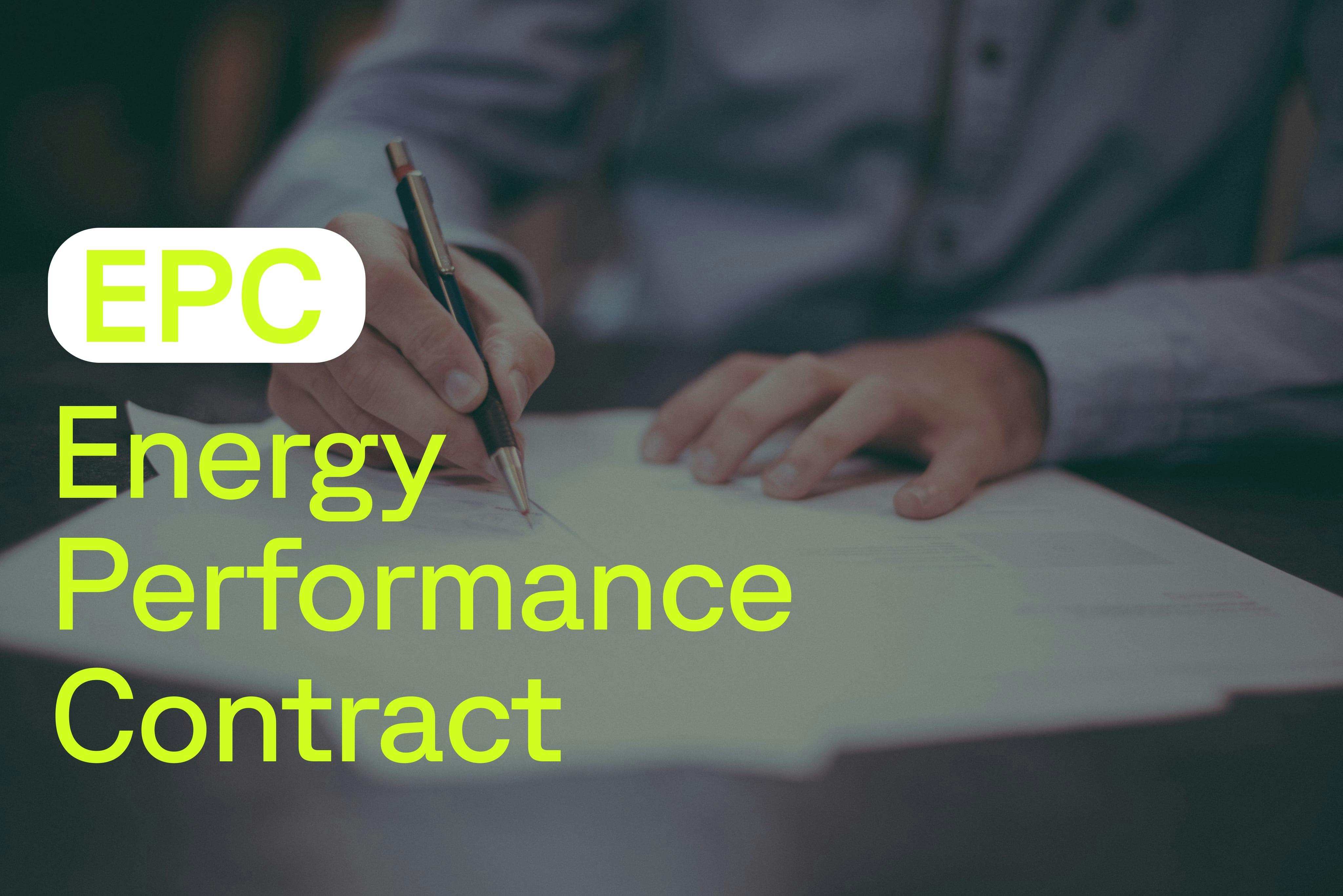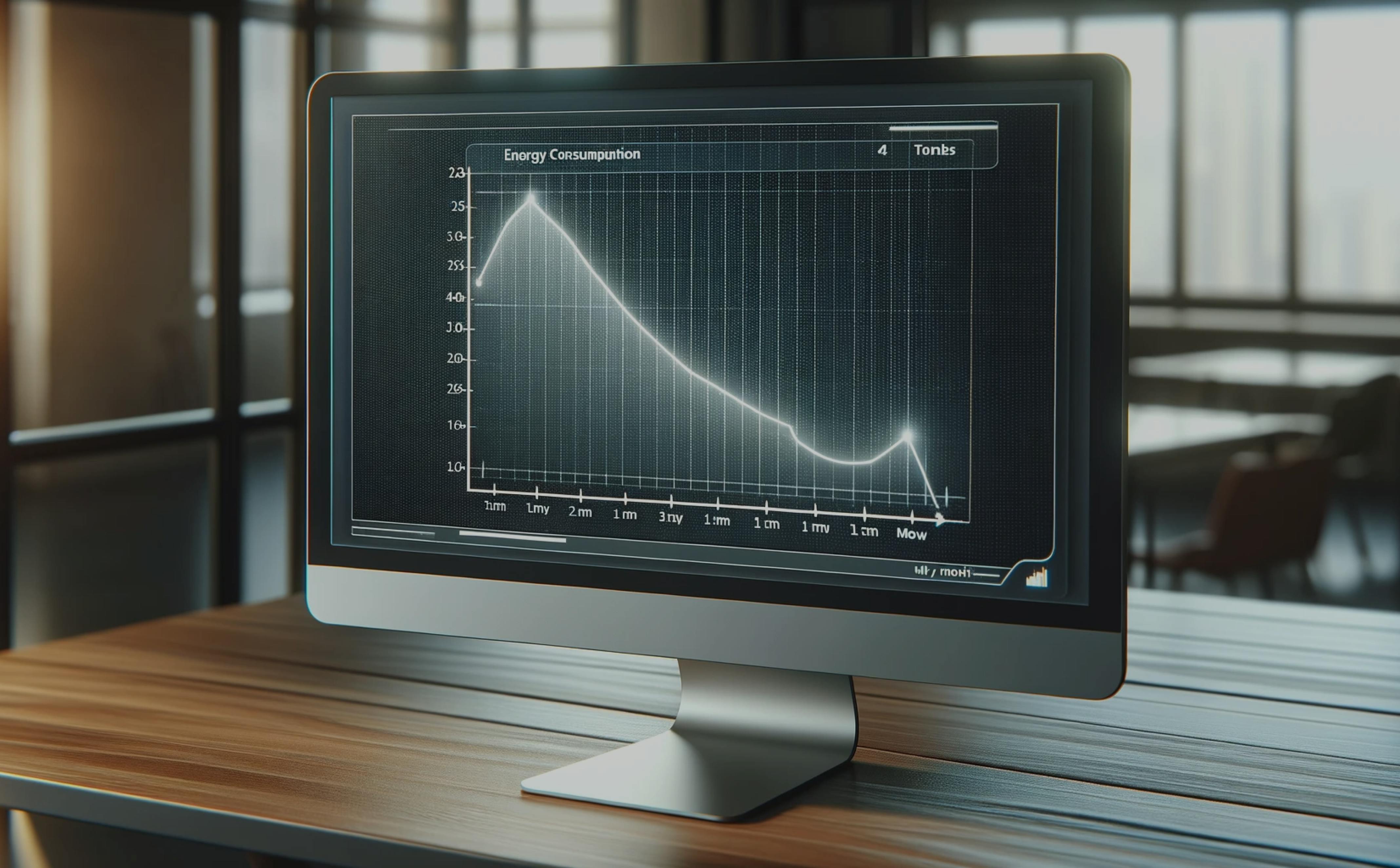The Energy Performance Contract: A Multi-Benefit Approach

- What is an Energy Performance Contract (EPC)?
- Regulatory Context: Energy Sobriety at the Heart of the System
- What are the different types of EPC?
- The Energy Performance Contract “Works and Services”
- Why implement an EPC: Advantages for property owners
- How to Finance the Work of an Energy Performance Contract?
- Aid and Subsidy Programs
To make a substantial impact on energy consumption, important financial investments are necessary for the energy renovation of existing buildings. The Energy Performance Contract (EPC) provides a secure commitment by specifying predetermined results upon subscription. It guarantees quantifiable energy performance levels over a defined period. Learn how to implement an EPC to optimize its advantages.
The Wattsense technology is an intuitive connectivity solution that supports the implementation of an Energy Performance Contract (EPC). It simplifies the installation of a building management system (BMS) in your facilities, regardless of their size. Learn more here.
What is an Energy Performance Contract (EPC)?
Definition and Operation of the EPC
The Energy Performance Contract (EPC) is a tool that expresses the will of a project owner (condominium association, private company, local authority) to invest in improving the energy performance of one or more buildings.
This contract is made between the project owner (public or private) and a company. It is put in writing and guarantees, over a predefined period, a level of energy performance to be achieved. The objective is established taking into consideration an initial reference situation. The duration of the contract can be freely set based on the established action plan.
Depending on the nature of the EPC, the operator holding the contract can be an energy management company, a facility management company, or a construction company.
Regulatory Context: Energy Sobriety at the Heart of the System
While new constructions have long been subjected to stringent energy sobriety standards, existing buildings are now also in the spotlight.
Through increasingly demanding regulations, the legislative landscape is geared towards a substantial reduction in energy consumption within established structures. Laws such as Grenelle 1 and 2, the Energy Transition Law, and more recently, the Tertiary Decree, enforce quantifiable targets for diminishing greenhouse gas emissions and enhancing energy efficiency. These objectives are coupled with phased deadlines, extending until 2050.
The Eco Energy Tertiary initiative, stemming from the Tertiary Decree under the ELAN law, exemplifies this progressive regulatory approach. It guides stakeholders in the tertiary sector towards greater energy efficiency, aiming for a minimum 40% reduction in final energy consumption by 2030, 50% by 2040, and 60% by 2050 (compared to 2010).
To realize the government's overarching objectives across all sectors, comprehensive measures must be implemented, surpassing mere energy renovations. This involves installing high-quality systems, maintaining equipment rigorously, and fostering behavioral changes to support the efficacy of these initiatives. Additionally, better control over consumption serves as a safeguard against recurrent spikes in energy costs.
What are the different types of EPC?
Thanks to various contract types, the EPC adapts to all budgets and property sizes.
The Energy Performance Contract “Services”
It is aimed at relatively recent buildings that do not require major renovations but whose operation deserves to be optimized. It can also represent a first step for project owners with a limited budget. The CPE Services can generate energy savings of around 10 to 20% compared to the initial situation. It may include the installation of Building Management System (BMS) solutions, programmable and automated equipment (lighting, heating), or the integration of a renewable energy source.

What are the different types of EPC?
Thanks to various contract types, the EPC adapts to all budgets and property sizes.
The Energy Performance Contract “Services”
It is aimed at relatively recent buildings that do not require major renovations but whose operation deserves to be optimized. It can also represent a first step for project owners with a limited budget. The CPE Services can generate energy savings of around 10 to 20% compared to the initial situation. It may include the installation of Building Management System (BMS) solutions, programmable and automated equipment (lighting, heating), or the integration of a renewable energy source.
The Energy Performance Contract “Works and Services”
Also known as 'Global' EPC, it requires a larger financial investment but allows for substantial savings, particularly in older buildings (around 20 to 50%). In addition to actions related to daily operations, the Global EPC addresses the building envelope (thermal insulation, exterior joinery) and/or heating, cooling, and ventilation systems.
Why implement an EPC: Advantages for property owners
Guaranteed Energy Savings
For property owners, committing substantial funds to energy renovations can be challenging without a clear understanding of when (or even if) a return on investment will be possible.
The EPC effectively addresses this concern through a significant advantage: the Guaranteed Energy Performance (GEP). It represents an obligation of results from the operator to the client, ensuring that performance goals will be achieved. In case of non-achievement, a bonus/penalty system is implemented in favor of the property owner.
The GEP not only allows the property owner to be compensated in case of unmet goals but also encourages operators to engage in quality work over the long term.
In the context of an EPC, the contractual goal is often expressed as a percentage relative to an initial reference situation. For example: reduce energy consumption by 25% within 5 years.
As the government's objectives are also expressed in relative percentages, this way of describing the contractual guarantee is consistent with ensuring compliance with regulatory obligations.
A Customized Energy Renovation
Another major advantage of the EPC lies in its modularity and adaptability. The required work adjusts to:
- The configuration of the premises.
- The size of the studied real estate assets.
- The building's use.
- Technical constraints.
- Financial capabilities and ambitions of the property owner.
- The property owner's visibility regarding the building's evolution (sale, renovation, extension).
The result is a tailor-made action plan, truly adapted to the premises' configuration, with realistic consumption reduction goals considering the initial situation.
Moreover, the works included in the EPC are highly diversified, aligning with a comprehensive approach to the entire structure. The property owner, guided by the company responsible for the contract, can select the most relevant actions for their situation.
Reduced Maintenance Costs
New equipment doesn't last forever. The operational phase accounts for over three-quarters of the overall cost of construction. This cost includes replacing end-of-life original equipment, various repairs, and, of course, daily consumptions (water, electricity, etc.).
Rigorous maintenance of installations engages property owners in a virtuous circle. Equipment enjoys a longer lifespan, retains optimal performance for an extended period, and corrective maintenance (repairs) is reduced.
To cut down costs related to repairs and/or overconsumption, automatic malfunction detection systems are worth considering (leak detection, for example).
Note: To ensure control over all parameters influencing the energy consumption of a structure, the operator selected under the EPC takes charge of the operation and maintenance of the systems throughout the contract's duration.
How to Ensure Achieving the Objectives of the Energy Performance Contract (EPC)?
The Importance of the Initial Diagnosis
One of the challenges associated with the performance guarantee of the EPC is setting an objective that is both ambitious and achievable in light of the initial situation.
To accomplish this, the study phase and the energy diagnosis at the start of the operation are crucial. The more extensive and reliable the collected information, the higher the quality of the action plan.
To achieve the set objectives, the chosen company determines (based on the reference situation) the actions that will have the maximum impact on the building's consumption. These are the operations to prioritize.
For maximum efficiency, the action plan must include the most accurate budget estimate possible to allow the client time to request all available financing. The more subsidies obtained, the more extensive the work can be.
Real-time Data Collection: Role of Connected Technologies
To ensure reaching the goals of the EPC, regular monitoring of consumption is essential but insufficient.
Many parameters impact the energy efficiency of buildings: external temperature, meteorological data, potential malfunctions, user behavior, etc. Surveillance by hand by technicians is limited in collecting and effectively analyzing all these data simultaneously. Connected technologies prove to be excellent allies to ensure the success of an EPC. Dynamic monitoring of the building allows reacting almost in real-time to observed conditions.
Thanks to strategically distributed measurement points in the construction, BMS solutions can provide reports on consumption, and equipment status, or detect anomalies. In addition, applications for remote management, control, and communication transform structures into high-value Smart Buildings.

However, data collection is not an end in itself. The added value of an efficient property lies in a judicious choice of information to study, and a user-friendly interface that is exploitable by its users. Therefore, the interoperability of different applications is a key factor in the success of an energy renovation project.
Do you want to improve your building's performance quickly and easily? Discover the Wattsense connectivity solution today, and request your personalized demonstration to learn more.
Involvement and Awareness of Occupants
The success of an energy performance contract (EPC) does not rely solely on the quality of installations. Usage conditions can significantly impact the performance of even the most efficient equipment.
In this regard, it is important to involve building occupants from the beginning of the project. The objectives of the initiative should be explained to them in detail, along with the resulting benefits (comfort, health, increased property value). For maximum engagement, complementary actions can be considered, such as regular updates on the progress of the work or organizing training sessions to use the new equipment appropriately (especially connected solutions).
How to Finance the Work of an Energy Performance Contract?
There are various possible financing methods
The EPC is not a financial aid program as such. It is a tool, a roadmap leading to a specific goal. Thanks to its obligation of result, the EPC can, however, imply a return on investment over a more or less extended period due to energy savings.
Here are the different possible financing solutions in the context of an energy performance contract:
- Self-financing: In this configuration, the cost of the work is entirely covered by the energy savings realized at the end of the contract. However, the project sponsor must invest the initial amount to initiate the work. Note that the more ambitious the consumption reduction goal, the higher the cost of the operation might be.
- Third-party financing: Here, the company in charge of the EPC proposes a financial arrangement to its client, integrating all possible aid devices to supplement its own funds (Energy Saving Certificates, subsidized loans, grants).
- Third-party investment: The operator holding the contract finances the planned renovation works. In return, a fee is paid to them (usually in the form of claims on the amount of savings realized at the end of the EPC). Third-party investment allows project sponsors to meet their regulatory obligations and benefit from an efficient facility without significantly impacting their cash flow.
Aid and Subsidy Programs
Energy Saving Certificates
Depending on the nature of the work planned in the EPC, a portion of it can be covered by Energy Saving Certificates (CEE). This is particularly the case for the installation of a Class B BMS, as stipulated in the standardized sheet BAT-TH-116.
This system encourages individuals and professionals to engage in energy transition through subsidies. CEE premiums are usually paid by energy managers. To benefit from them in the context of an EPC, the reduction in the building's energy consumption must be greater than or equal to 20%, for a minimum duration of 5 years.
State Aid
For micro-enterprises, very small businesses (TPE), and small and medium-sized enterprises (PME), there are aid programs in the form of participatory loans (Eco-Energy Loan: PEE) or tax credits for energy renovation work.
ADEME Aid
Nationally, ADEME offers flat-rate financial aid granted based on the investment made. The 'PME Stepping Stones' can be used to finance the study phase preceding an EPC or project support through owner's representative assistance (AMO). There are other aids specific to each regional branch of ADEME.
Beyond simply achieving performance goals, enhancing the energy efficiency of a facility is part of a broader initiative. This involves not only reducing greenhouse gas emissions but also promoting health, ensuring user comfort, boosting business productivity, and increasing the overall value of real estate. The implementation of an Energy Performance Contract (EPC) plays a crucial role in addressing these aspects.
Wattsense technology empowers you to take the initial step toward your performance objectives by swiftly and cost-effectively implementing a Building Management System (BMS) in your facility. Our scalable solution goes beyond the mere reduction of energy consumption associated with an EPC, offering the flexibility to integrate a fully personalized resource management system. If you're interested in learning more, don't hesitate to request a demonstration.
Want to learn more about the Wattsense connectivity solution?
Discover our solutionContinue reading



